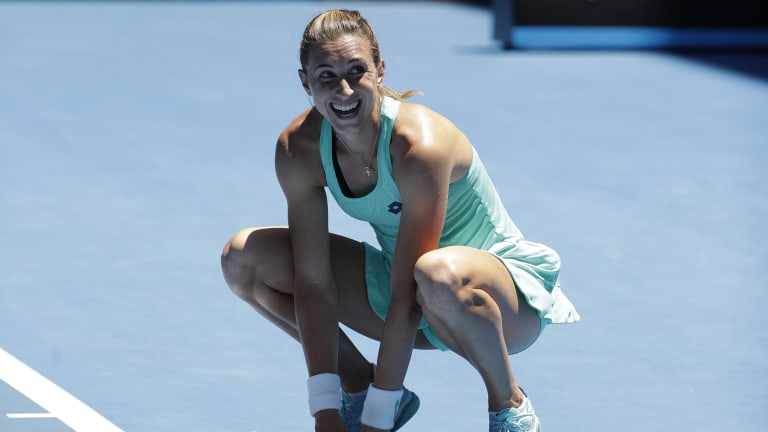For years, we’ve heard that Nick Kyrgios is a “player who loves the big stage.” Certainly his haircut, his earrings, and his penchant for uncensored self-expression would have led you to believe that this is a guy who relishes being the ringmaster at the circus. The fact that, as a 19-year-old in 2014, he beat Rafael Nadal in his Centre Court debut at Wimbledon would seem to close the case in his favor.
But in the four years since, the evidence for Kyrgios’ love of the spotlight has grown a little thin. Rather than let himself be lifted by the energy of the crowd or inspired by the pressure of the moment, he has been distracted and agitated by them. At Wimbledon, he grew progressively more disconsolate against Andy Murray on Centre Court. At the US Open, he was incensed by a group of late-arriving fans in Arthur Ashe Stadium. At the Australian Open, he was bothered by noise from the stands. Kyrgios has yet to reach the semifinals of a Grand Slam event, or win a Masters 1000 tournament. Before this week he hadn’t won a match on the biggest stage in his home country, Rod Laver Arena.
Now, after his admirably composed and resilient 7-6 (5), 4-6, 7-6 (6), 7-6 (5) victory over Jo-Wilfried Tsonga on Friday night, Kyrgios has. In one sense, this win fit into a well-established Kyrgios pattern. Over the course of his career, he hasn’t so much loved the spotlight as much as he has loved sharing it with a great player or someone he respects. He’s better known for his victories over Nadal, Novak Djokovic and Roger Federer—as well as his three-tiebreaker loss to Federer in Miami, my match of 2017—than he is for any titles he has won.
While Tsonga isn’t among the Big Four, Kyrgios talked a lot before and after the match about how much he has always admired Jo. There would have been no shame in losing to Tsonga, a finalist here in 2008; that took some of the pressure off Kyrgios and helped him keep his emotions in check.
“He’s a tough opponent,” Kyrgios said of Tsonga. “He’s beaten pretty much all the top guys in the world.”

